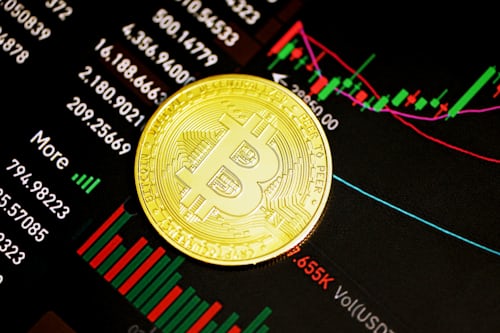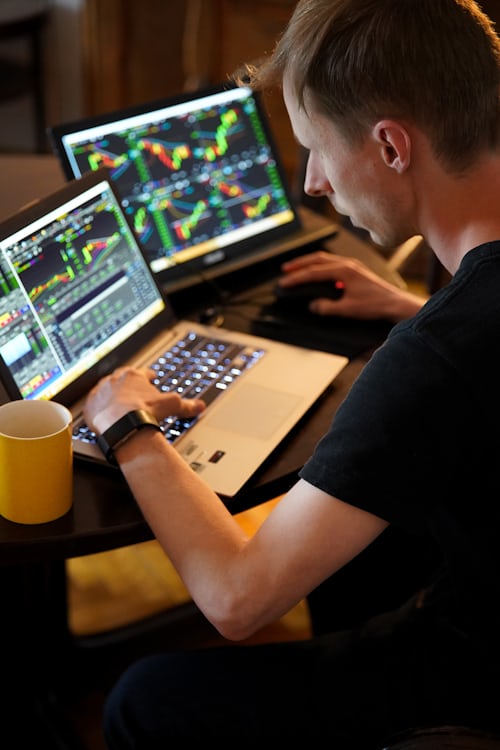What is scalping trading?
In its simplest form, scalping is a trading strategy that frequently targets small profits throughout the day. As a result, the trader will rarely keep a trade open for more than a few minutes. This is in stark contrast to a traditional swing trader, where traders may hold onto positions for several days or weeks.
Although scalping trading can be used for virtually any asset class, it is most common in forex. This is because currency pairs - especially the majors - move very small around the clock. Moreover, major currency pairs are highly liquid, which makes them perfect for a scalping trading strategy.
In terms of fundamentals, scalping can be a very intense battlefield, not least because the investor must invest 100% of their time and energy into a potential trade. This is because the trader must be ready to pounce on a particular opportunity and manually execute the trade.
Having said that, scalping is often considered a low-risk strategy because traders install stop loss orders to keep potential losses to a minimum. In fact, this is crucial. A significant loss could wipe out dozens of successful scalping trades that the investor made earlier in the day.
How does scalping trading work?
If you've never done a scalping trade before, it's probably best if we give you some examples to clear the fog.
Example 1: Scalping GBP / USD
Let's say you want to trade GBP / USD with your scalping strategy in exnessbroker.net. Your starting balance is £1,000 and you decide not to leverage.
- GBP / USD is currently at 1.3104
- Looking at the charts, you think that GBP is likely to rise in the next few minutes
- As such, you place a buy order for £1,000
- You place a take profit order at 1.3169, which is an increase of 65 pips Or 0.5%
- You also place a stop loss order to mitigate your losses. At 1.3077, this would mean a loss of 27 pips or 0.2%
- GBP / USD reaches 1.3169, so your scalping position is automatically closed with a profit of 0.5% or £5.
As you can see from the example above, scalping is all about really small profits. In fact, in the example given, only one of the two things could have happened. If the trade had been successful, the investor would have made a profit of 0.5%, which was equivalent to £5.
Although this sounds like an extremely small profit to aim for, it is important to note that the trader would try to repeat the above example dozens or even hundreds of times throughout the day. Alternatively, if the trade had not been successful, the investor would have limited his losses to only 0.2% or 2 GBP.
Let's look at a second example to make sure you understand how scalping trading works.
Example 2: Scalping EUR / USD with Leverage
Although scalping trading involves extremely small price movements, profits should be considered in terms of pips or percentages - not in terms of money gains per word. Therefore, it is quite feasible for traders to use leverage when looking for small price movements.
This effectively allows the trader to increase their scalping position without having to deposit large amounts of capital. In this example, we will look at the result of a scalping trade in EUR / USD when the trader applies a leverage of 10: 1.
- EUR / USD is currently set at 1.1389
- The scalping trader assumes that the EUR will appreciate against the USD in the next few minutes and therefore places a buy order
- The trader is always looking for a 0.3% profit from their trades, so a take profit order of 1.1423 is executed
- To reduce their losses to 0.1%, a stop loss order of 1.1377 is also placed
- The trader also applies a leverage of 10: 1, increasing the total bet from 1,000 GBP to 10,000 GBP
- The scalping trade is successful, as EUR / USD reaches the price target of 1.1423 a few minutes later
- First aid when bullying at school
- Slot machines on the Internet have already taken over the world and the players of Australia in this is fully convinced the editor in chief of the site Online Casino Aussie David Borg
- Playing at Foreign Casinos
- How to Promote a Casino Online
- How to Make Decentralized Sports Cryptocurrencies a Reality




